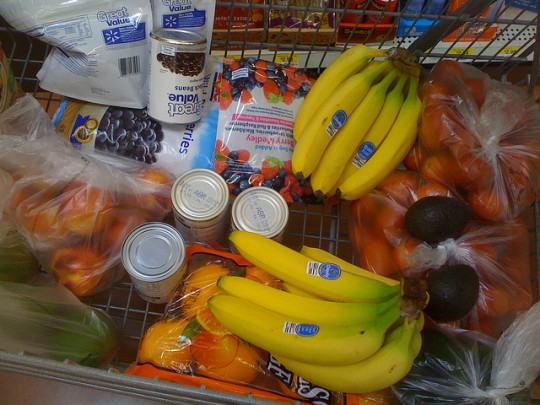Should the lack of access to good food be blamed for America’s poor eating habits?
Should the lack of access to good food be blamed for America’s poor eating habits?
From redesigning food labels to eliminating urban “food deserts,” researchers and policy-makers have proposed a number of solutions aimed at encouraging Americans to eat healthier. But recent data from the Share Our Strength’s Cooking Matters program suggests that difficulties in understanding nutrition facts and lack of access to good food may not be solely to blame for America’s poor eating habits.
As the Atlantic’s Jane Black explains today, the report (.pdf) hints that the greater obstacles to healthy meals may be planning skills, time and the price of food:
- Although families are largely satisfied with the variety (61 percent) and quality (64 percent) of healthy grocery items available to them, only 30 percent are satisfied with price
- Time is a barrier for some, especially families where the food decision maker works full time. This demographic has a significantly lower average number of healthy or made-from-scratch dinners in a typical week
- Low-income families that regularly plan meals, write grocery lists and budget for food make healthy meals from scratch more often (5+ times a week) than those who don’t. Unfortunately, 55 percent of families don’t regularly plan meals before going to the store, and 34% don’t regularly use a written grocery list
In her piece, Black goes on to weigh in on the findings:
The data reflects what my husband, Brent Cunningham, and I saw while reporting for six months in Huntington, West Virginia. Among the families we followed, the very poorest was the one most likely to cook healthy meals at home. But it required intense planning and basic cooking skills. The families least likely to eat well were the ones who, frankly, didn’t have to. They had enough money to swing by Burger King for dinner on the way home instead of cooking family meals and eating leftovers… They shopped impulsively, instead of methodically, at the grocery store, which meant their carts were filled with frozen pizzas, chips, and snacks.
By Lia Steakley
Stanford University Medical Center
Photo by jessica mullen
###
* Stanford University Medical Center integrates research, medical education and patient care at its three institutions – Stanford University School of Medicine, Stanford Hospital & Clinics and Lucile Packard Children’s Hospital.
** The above story is adapted from materials provided by Stanford University School of Medicine
________________________________________________________________





















